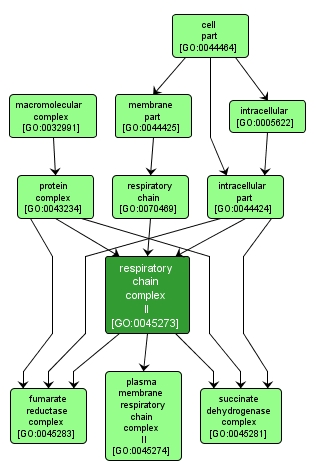GO TERM SUMMARY
|
| Name: |
respiratory chain complex II |
| Acc: |
GO:0045273 |
| Aspect: |
Cellular Component |
| Desc: |
A part of the respiratory chain, containing the four polypeptide subunits of succinate dehydrogenase, flavin-adenine dinucleotide and iron-sulfur. Catalyzes the oxidation of succinate by ubiquinone. Connects the TCA cycle with the respiratory chain. |
Synonyms:
- electron transport complex II
|
|

|
INTERACTIVE GO GRAPH
|














